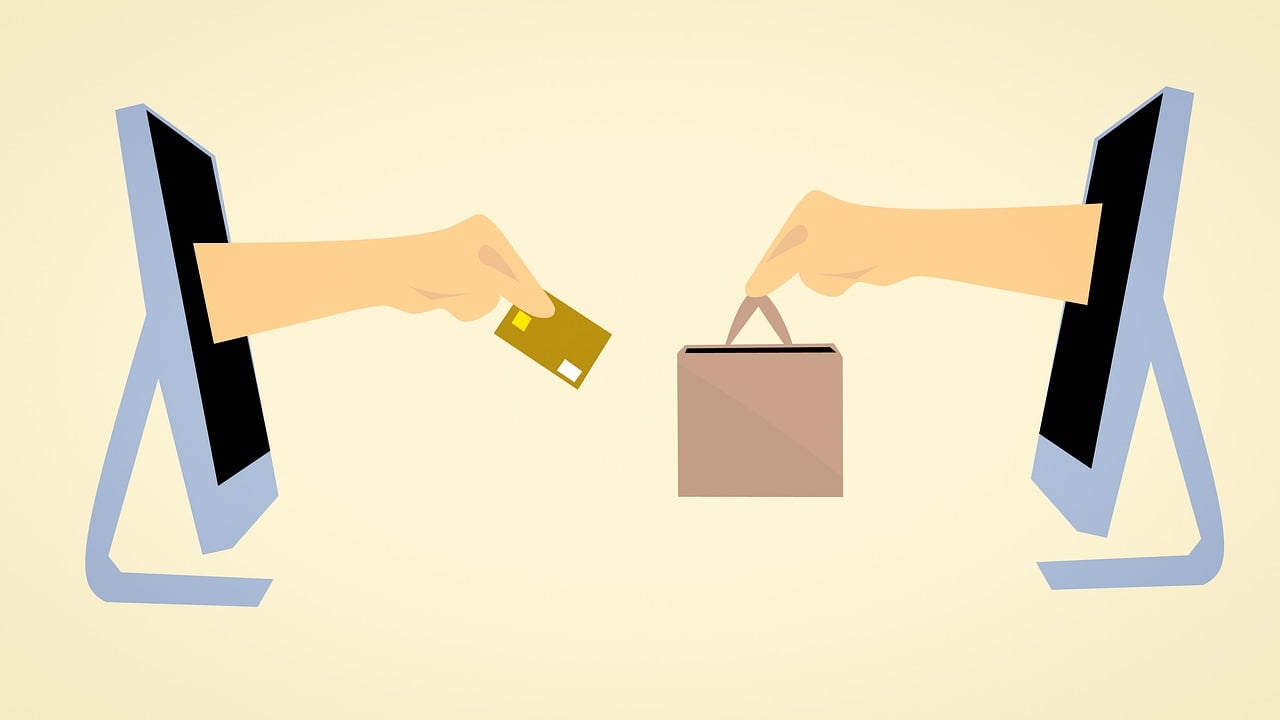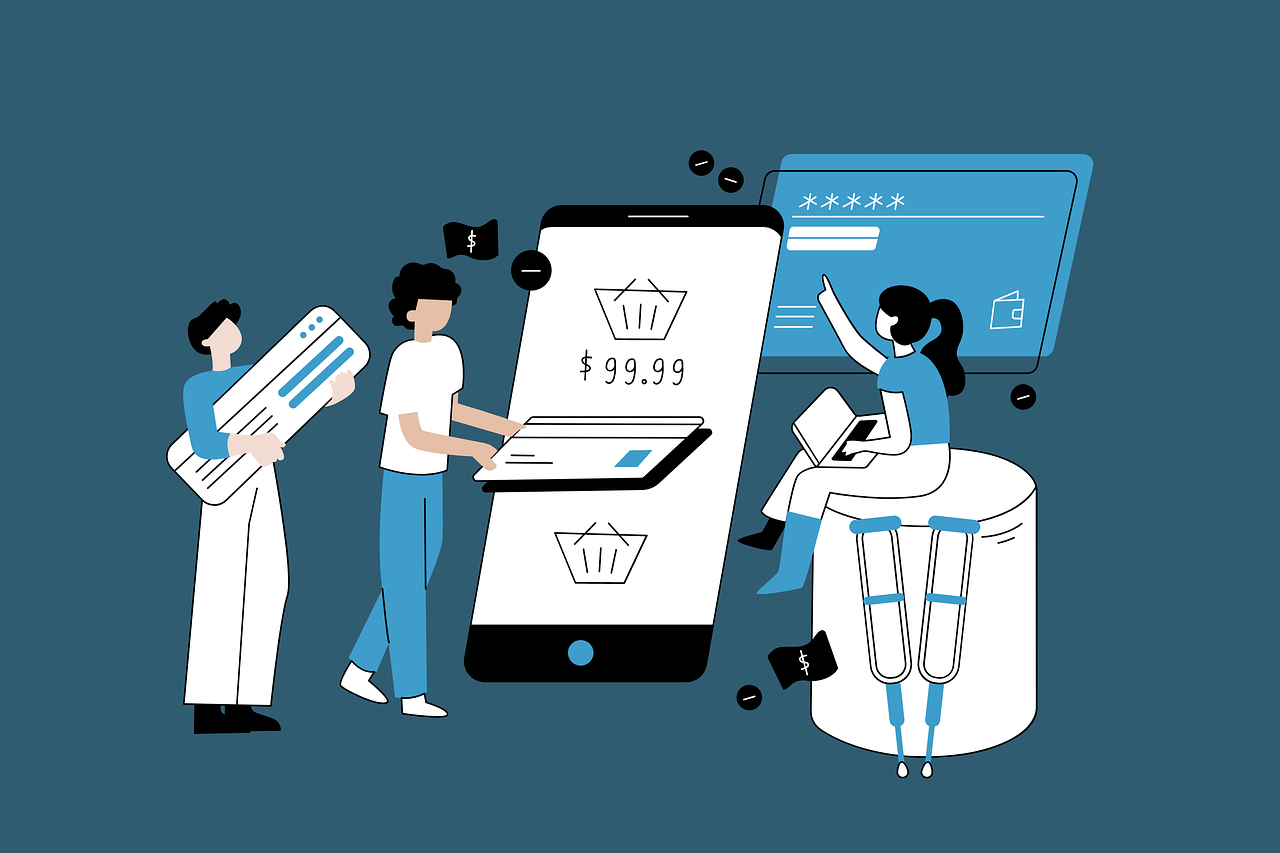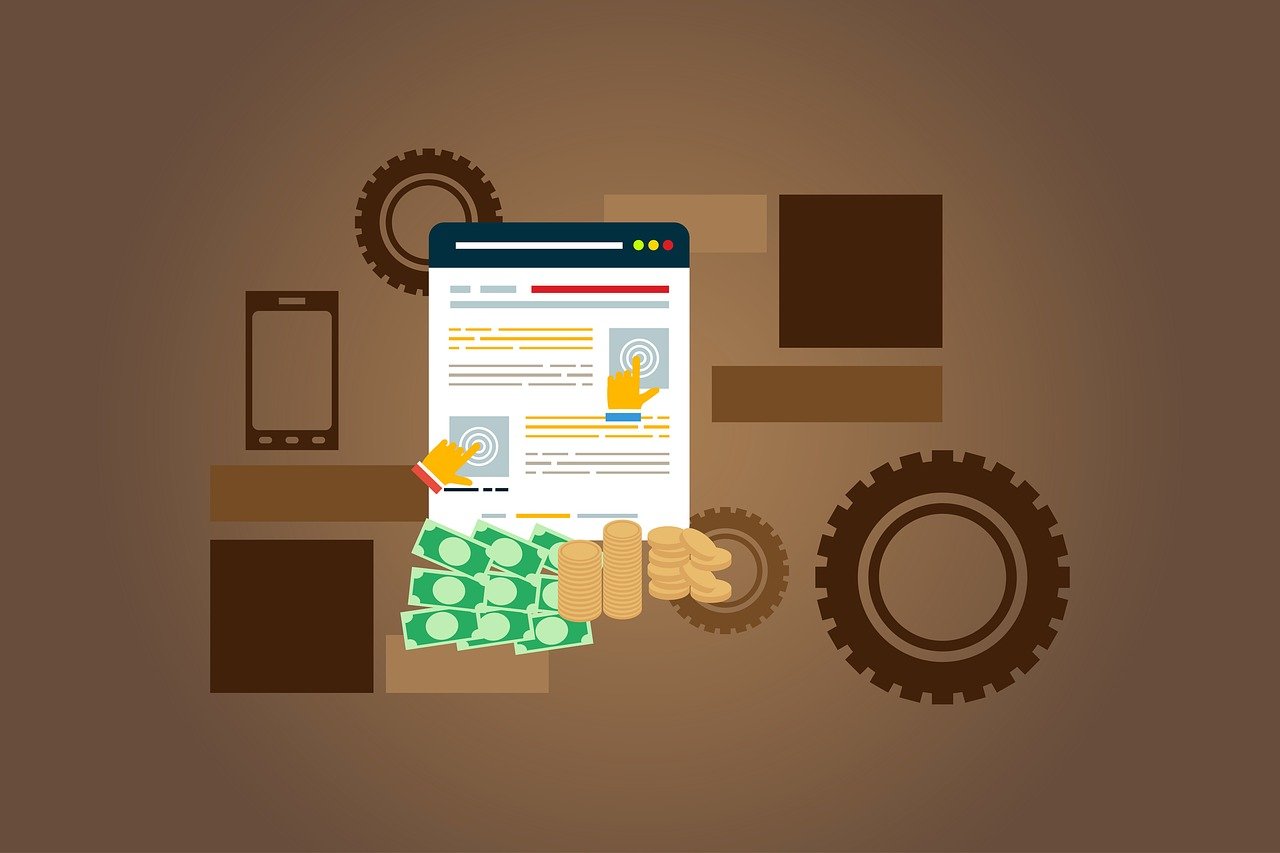
Making Money Online in [Current Year]: A Comprehensive Guide to Real Opportunities
The allure of making money online is undeniable. Images of working from a beach, setting your own hours, and achieving financial freedom fuel the dreams of millions. And while the “laptop lifestyle” is achievable for some, the reality is often more complex, requiring dedication, skill, and a healthy dose of realism. The internet has fundamentally changed how we work and earn, opening up a vast landscape of opportunities previously unimaginable. But navigating this landscape requires understanding the different paths available, the effort involved, and crucially, how to avoid the pitfalls and scams that inevitably litter the digital gold rush.
This comprehensive guide aims to cut through the hype and provide a realistic overview of legitimate ways to earn an income online. Whether you’re looking for a side hustle to supplement your current job, aiming to replace your traditional income entirely, or seeking ways to monetize a passion, there are likely options suited to your skills and goals. However, let’s be clear from the outset: making significant money online is rarely quick or easy. It typically requires learning new skills, consistent effort, patience, and often, an initial investment of time (and sometimes money) before you see substantial returns.
Forget the “get rich quick” schemes promising thousands overnight with minimal effort – they are almost always scams. True online income generation is about providing value, whether through skills, services, content, or products. It’s about building something sustainable. So, let’s explore the genuine avenues available.

The Right Mindset: Setting Yourself Up for Success
Before diving into specific methods, it’s crucial to adopt the right mindset. Earning money online is a marathon, not a sprint. Here are key mental frameworks to cultivate:
- Patience and Persistence: Success rarely happens overnight. You’ll face challenges, slow periods, and moments of doubt. The ability to persist, learn from failures, and keep moving forward is paramount.
- Continuous Learning: The digital world evolves rapidly. Platforms change algorithms, new tools emerge, and best practices shift. Be prepared to constantly learn and adapt your strategies.
- Professionalism: Even if you’re working in your pajamas, treat your online endeavors professionally. Meet deadlines, communicate clearly, deliver quality work, and manage your finances responsibly.
- Value Proposition: Ask yourself: What value am I providing? Whether it’s solving a problem, entertaining an audience, or offering a unique product, your income potential is directly tied to the value you offer.
- Realistic Expectations: Don’t expect to earn a full-time income in your first month (though it’s not impossible for some, it’s highly unlikely for most). Set achievable goals and celebrate small wins along the way.
- Scam Awareness: Maintain a healthy skepticism. If something sounds too good to be true (e.g., high pay for little work, upfront fees for guaranteed jobs), it probably is. We’ll cover avoiding scams later in more detail.

Exploring the Landscape: Diverse Ways to Earn Online
Online income opportunities can be broadly categorized. Understanding these categories can help you identify where your skills and interests might fit best. We’ll delve into specific methods within these categories:
1. Freelancing: Selling Your Skills and Services
Freelancing is one of the most direct ways to start earning online. If you have a marketable skill, you can offer it to clients worldwide on a project or retainer basis. It leverages abilities you may already possess from your education or previous work experience.
What it is: Offering specific services to clients remotely as an independent contractor.
How it Works: Freelancers typically find clients through dedicated platforms (like Upwork, Fiverr, Freelancer.com), professional networks (like LinkedIn), direct outreach, or personal websites. You agree on a scope of work, timeline, and payment terms, complete the work, and get paid.
Popular Freelance Skills:
-
- Writing & Editing: Content writing, copywriting, technical writing, proofreading, editing.
- Graphic Design: Logo design, website design, social media graphics, illustration.
- Web Development & Programming: Front-end, back-end development, app development, coding in various languages.
- Digital Marketing: SEO (Search Engine Optimization), SEM (Search Engine Marketing), social media management, email marketing, content marketing strategy.
* Virtual Assistance (VA): Administrative tasks, email management, scheduling, customer support, social media posting.
* Video Editing & Production: Editing raw footage, adding effects, creating promotional videos.
* Translation & Transcription: Converting audio/video to text or translating content between languages.
* Accounting & Bookkeeping: Financial services for businesses.
* Consulting: Providing expert advice in a specific field (business, marketing, IT, etc.).
Pros:
-
- Flexibility: Choose your projects, clients, and often, your working hours.
* Direct Income: Get paid directly for the work you do.
* Skill Development: Constantly hone your existing skills and learn new ones.
* Location Independence: Work from anywhere with an internet connection.
Cons:
-
- Income Instability: Workload can fluctuate (“feast or famine” cycle).
* Finding Clients: Can be competitive and time-consuming, especially initially.
* Self-Management: Responsible for invoicing, taxes, finding work, and self-discipline.
* Isolation: Can be lonely compared to a traditional office environment.
Getting Started:
- Identify Your Skill: What service can you offer that people will pay for?
- Build a Portfolio: Showcase your best work. If you’re new, consider doing a small project for free or cheap for a non-profit or friend to build examples.
- Choose Platforms/Methods: Sign up for freelance platforms, optimize your LinkedIn profile, consider creating a personal website.
- Set Your Rates: Research industry standards but factor in your experience. Don’t undervalue yourself, but be competitive initially.
- Pitch & Apply: Start applying for relevant jobs or pitching potential clients. Tailor each application.

2. Affiliate Marketing: Earning Commissions by Promoting Products

Affiliate marketing involves partnering with companies to promote their products or services. You earn a commission for every sale or lead generated through your unique affiliate link.
What it is: Promoting other companies’ products/services and earning a percentage of the sales you drive.
How it Works: You join an affiliate program (e.g., Amazon Associates, ShareASale, ClickBank, or individual company programs), receive a unique tracking link, and then promote that link through your website, blog, social media, email list, or YouTube channel. When someone clicks your link and makes a purchase (or completes a desired action), you earn a commission.
Pros:
-
- Low Startup Cost: You don’t need to create your own products.
* Flexibility: Promote products relevant to your niche and audience.
* Passive Income Potential: Content with affiliate links can generate income over time without constant active work (though maintenance and promotion are needed).
* Wide Range of Products: Virtually endless products and services to promote across various niches.
Cons:
-
- Building an Audience Takes Time: You need traffic (website visitors, social media followers, email subscribers) to make significant income.
* Reliance on Merchant Programs: Commission rates and program terms can change.
* Requires Trust: Your audience needs to trust your recommendations. Promoting low-quality products can damage your reputation.
* Disclosure Requirements: You must legally disclose your affiliate relationships (e.g., using #ad or stating you may earn a commission).
Getting Started:
- Choose a Niche: Select a topic you’re knowledgeable and passionate about.
- Build a Platform: Start a blog, website, YouTube channel, or grow a social media presence focused on your niche.
- Find Relevant Affiliate Programs: Search for programs related to your niche.
- Create Valuable Content: Write reviews, tutorials, comparisons, or informational content incorporating your affiliate links naturally.
- Drive Traffic: Use SEO, social media, email marketing, or paid ads to bring people to your content.
- Build Trust & Disclose: Be transparent and only recommend products you genuinely believe in.
3. Blogging & Content Creation (YouTube, Podcasting)
Creating valuable, engaging content can attract an audience, which can then be monetized in various ways. This requires consistency and a passion for your chosen topic.
What it is: Regularly producing written (blog), video (YouTube), or audio (podcast) content on a specific topic to build an audience.
How it Works: You create high-quality content consistently. As your audience grows, you can monetize through display advertising (e.g., Google AdSense, Mediavine), affiliate marketing (as described above), sponsorships (brands paying you to feature them), selling your own digital or physical products, or offering premium content/memberships.
Pros:
-
- Build Authority & Influence: Become a recognized voice in your niche.
* Multiple Monetization Streams: Diversify income through ads, affiliates, products, etc.
* Creative Outlet: Share your passion and connect with like-minded people.
* Asset Building: Your content library becomes a valuable asset over time.
Cons:
-
- Time-Consuming: Creating high-quality content consistently takes significant time and effort.
* Slow Growth Initially: Building a substantial audience can take months or even years.
* Algorithm Dependence: Traffic can be affected by changes in search engine or social media algorithms.
* Competition: Many niches are crowded, requiring unique angles or exceptional quality.
Getting Started:
- Choose Your Niche & Platform: What topic will you focus on? Will you blog, vlog, or podcast?
- Set Up Your Platform: Register a domain and hosting for a blog, create a YouTube channel, or choose a podcast hosting service.
- Plan Your Content: Brainstorm ideas, create a content calendar.
- Create & Publish Consistently: Focus on quality and regularity. Learn basic SEO for blogs/YouTube.
- Promote Your Content: Share on social media, build an email list, engage with your audience.
- Monetize Strategically: Introduce monetization methods once you have a decent audience, ensuring they align with your content and audience trust.
4. E-commerce: Selling Products Online

Selling physical products online is a massive industry with various models to choose from.
What it is: Setting up an online store to sell physical goods.
How it Works: You can create your own unique products, source products from wholesalers, use a dropshipping model (where a third party handles inventory and shipping), or utilize print-on-demand services (for custom apparel, mugs, etc.). You’ll typically use platforms like Shopify, WooCommerce (with WordPress), Etsy, Amazon, or eBay.
Popular E-commerce Models:
- Selling Own Products: Highest profit potential, but requires product development, manufacturing, inventory management.
- Retail Arbitrage/Wholesale: Buying products low (from retail stores or wholesalers) and selling higher online. Requires inventory management.
- Dropshipping: You list products in your store, but a supplier ships directly to the customer when an order is placed. Lower risk/investment, but lower margins and less control over quality/shipping.
- Print-on-Demand (POD): You create designs for products (t-shirts, posters, mugs). A POD service prints and ships the product only when an order is placed. No inventory needed.
Pros:
-
- High Scalability Potential: Successful stores can generate significant revenue.
* Brand Building: Opportunity to create a recognized brand.
* Direct Customer Relationship: Build loyalty and gather feedback.
Cons:
-
- Requires Investment: Costs for platform, inventory (unless dropshipping/POD), marketing.
* Logistics & Customer Service: Managing shipping, returns, inquiries can be demanding.
* Marketing Intensive: Driving traffic to your store requires ongoing marketing efforts (SEO, paid ads, social media).
* Competition: The e-commerce space is highly competitive.
Getting Started:
- Choose Your Niche & Product Type: Research market demand and competition.
- Select Your Business Model: Decide between making, sourcing, dropshipping, or POD.
- Choose Your Platform: Select an e-commerce platform (e.g., Shopify, Etsy, WooCommerce).
- Set Up Your Store: Design your store, write product descriptions, set up payment processing.
- Source/Create Products: Find suppliers or create your product listings/designs.
- Market Your Store: Develop a marketing strategy to drive traffic and sales.
5. Creating and Selling Online Courses & Digital Products

If you have expertise in a specific area, you can package it into a digital format and sell it online.
What it is: Selling knowledge or digital assets like courses, e-books, templates, software, or stock photos.
How it Works: You identify a topic where you have expertise and people are willing to pay for knowledge or resources. You create the digital product (write an e-book, record video lessons for a course, design templates) and then sell it through your own website, dedicated platforms (like Teachable, Thinkific, Udemy for courses; Etsy for printables/templates), or marketplaces.
Pros:
-
- High Profit Margins: Digital products often have low reproduction costs after the initial creation.
* Scalability: Sell the same product multiple times without increasing production costs significantly.
* Leverages Expertise: Monetize what you already know.
* Passive Income Potential: Products can sell over time with ongoing marketing.
Cons:
-
- Significant Upfront Effort: Creating a high-quality course or product takes considerable time and expertise.
* Marketing Required: You need to build an audience or run ads to find buyers.
* Competition: Many niches have existing courses and digital products.
* Technology & Platform Costs: Course platforms or website hosting have associated fees.
Getting Started:
- Identify Your Expertise & Target Audience: What can you teach or provide that solves a problem or fulfills a need?
- Validate Your Idea: Research demand. Is anyone searching for or buying similar products? Consider surveying your potential audience.
- Choose Your Format: E-book, video course, templates, workshop?
- Create the Product: Outline, script, record, design, write. Focus on quality and value.
- Select a Platform: Choose where you will host and sell your product.
- Launch & Market: Develop a launch strategy and ongoing marketing plan.
6. Online Surveys, Micro-tasks, and Rewards Sites

These methods are often promoted as easy ways to make money online, but it’s crucial to have realistic expectations about earnings.
What it is: Completing short tasks, taking surveys, watching videos, or testing websites for small payments or rewards.
How it Works: You sign up for platforms like Amazon Mechanical Turk, Swagbucks, Prolific, or UserTesting. You complete available tasks or surveys and accumulate earnings, often paid out via PayPal or gift cards once you reach a minimum threshold.
Pros:
-
- Very Low Barrier to Entry: Almost anyone can sign up and start.
* Flexibility: Do tasks whenever you have spare time.
* No Specific Skills Required: Most tasks are simple.
Cons:
-
- Extremely Low Pay: Often amounts to far less than minimum wage per hour. This is not a viable primary income source.
* Can be Tedious and Repetitive: Tasks are often monotonous.
* Screenouts & Availability: You may not qualify for many surveys, and task availability can be limited.
* Payout Thresholds: May take a long time to earn enough to cash out.
Getting Started:
- Research Reputable Sites: Stick to well-known platforms to avoid scams.
- Sign Up & Complete Profiles: Provide accurate demographic information to qualify for more tasks/surveys.
- Be Patient & Consistent: Don’t expect large earnings quickly.
- Consider it Pocket Money: Best viewed as a way to earn small amounts of extra cash or gift cards in spare moments.
7. Online Tutoring and Coaching

Sharing your knowledge one-on-one or in small groups is another way to leverage expertise online.
What it is: Teaching academic subjects, skills (like music or language), or providing coaching (life, business, fitness) via video calls or online platforms.
How it Works: You can use platforms like VIPKid (ESL), Chegg Tutors, TutorMe, or market your services independently through your own website or social media. You conduct sessions using video conferencing tools like Zoom or Skype.
Pros:
-
- Leverages Academic/Skill Expertise: Monetize your knowledge directly.
* Rewarding: Help others learn and achieve their goals.
* Flexible Hours: Often possible to set your own schedule around client availability.
* Good Hourly Rates Possible: Experienced tutors/coaches can charge premium rates.
Cons:
-
- Requires Expertise & Teaching Ability: Need strong knowledge and the ability to explain concepts clearly.
* Finding Clients: Can take time to build a client base, especially independently.
* Time Zone Challenges: May need to work odd hours depending on client locations.
* Platform Fees/Commissions: Platforms often take a cut of your earnings.
Getting Started:
- Identify Your Subject/Niche: What can you confidently teach or coach?
- Get Certified (If Necessary): Some fields (like ESL or specific coaching areas) may require or benefit from certifications.
- Choose Your Platform/Method: Sign up for tutoring platforms or create your own website/marketing materials.
- Set Your Rates: Research competitive rates based on your experience and subject.
- Market Your Services: Promote yourself online or through relevant networks.
Taking the First Steps: How to Begin Your Online Earning Journey

Feeling overwhelmed? Here’s a simplified process to get started:
- Self-Assessment: Honestly evaluate your skills, interests, and available time. What are you good at? What do you enjoy doing? How much time can you realistically commit each week?
- Research: Explore the methods listed above (and others – like stock photography, remote jobs, etc.) in more detail. Which ones align best with your self-assessment? Look into specific platforms and potential earnings.
- Choose ONE Path (Initially): Don’t try to do everything at once. Pick one method that seems most promising and feasible for you and focus your energy there. You can always pivot or add more streams later.
- Learn the Ropes: Invest time in learning the specifics of your chosen method. Take free online courses, read blogs, watch tutorials. Understand the tools and platforms involved.
- Take Action & Start Small: Create your first piece of content, sign up for a freelance platform and create a profile, set up a basic online store, apply for one micro-task. The key is to move from planning to doing.
- Be Patient & Persistent: Track your progress, learn from what works and what doesn’t, and keep going. Don’t get discouraged by initial slow results.
- Network & Seek Feedback: Connect with others in your chosen field. Join online communities, ask questions, and be open to constructive criticism.
Warning Signs: How to Spot and Avoid Online Money-Making Scams

Unfortunately, the internet is full of scams preying on people eager to make money online. Be vigilant and watch out for these red flags:
-
- Promises of Unrealistic Income: “Make $5,000 in your first week with no experience!” Genuine opportunities require work and time.
- Requests for Upfront Payment: Be wary of jobs requiring you to pay for training materials, software, or application processing fees. Legitimate employers pay you, not the other way around (exceptions exist for legitimate business startup costs, but not usually for *getting* a job).
* Vague Job Descriptions: Scams often lack specific details about the work involved.
* Pressure to Act Immediately: High-pressure tactics (“Limited spots available! Sign up NOW!”) are often used by scammers.
* Requests for Sensitive Personal Information Early On: Be cautious about providing bank details, social security numbers, or copies of ID before establishing a legitimate working relationship and verifying the company.
* Poor Grammar and Unprofessional Communication: Emails or websites riddled with errors can be a sign of a scam.
* “Guaranteed” Results: No legitimate business or job can guarantee success or specific income levels.
* Overpayment Scams: Common in freelancing – a “client” sends a check for more than the agreed amount and asks you to wire back the difference. The initial check eventually bounces.
Rule of Thumb: If it sounds too good to be true, it almost certainly is. Do your research, trust your gut, and never send money or sensitive information without thorough verification.
The Long Game: Building a Sustainable Online Income

Making money online is not a mythical quest; it’s a practical endeavor that blends skills, strategy, and persistence. The methods outlined here – freelancing, affiliate marketing, content creation, e-commerce, selling digital products, tutoring, and even supplemental income through micro-tasks – are all viable avenues, each with its own set of requirements, benefits, and challenges.
The key is to approach it like building any other career or business: with realistic expectations, a willingness to learn and adapt, a focus on providing genuine value, and the perseverance to push through the inevitable hurdles. Choose a path that aligns with your strengths and interests, dedicate consistent effort, and be patient as you build momentum. While overnight riches are a fantasy, building a meaningful and sustainable online income is a very real possibility for those willing to put in the work.
Start small, stay curious, protect yourself from scams, and celebrate your progress along the way. Your online earning journey begins now.
we recommend also reading Making money on telegram
Leave a Reply